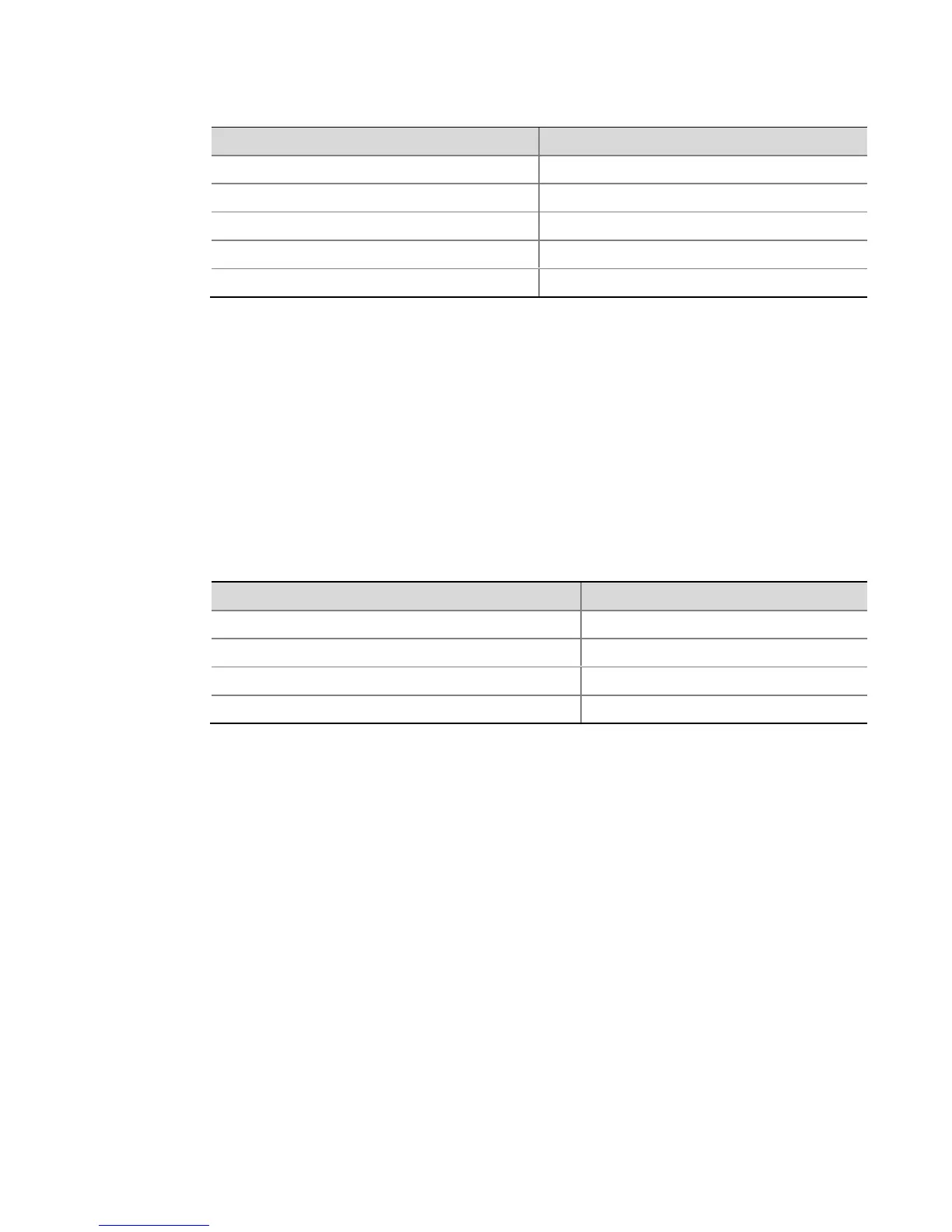Table 6-5 BootWare operation sub-menu
Menu item Description
<1> Backup Full BootWare Back up the entire BootWare.
<2> Restore Full BootWare Restore the entire BootWare.
<3> Update BootWare By Serial Update BootWare through a serial interface.
<4> Update BootWare By Ethernet Update BootWare through Ethernet.
<0> Exit To Main Menu Return to the main menu.
Device Control Sub-menu
Select 9 on the main menu to enter the device control sub-menu:
==========================<DEVICE CONTROL>============================
|<1> Display All Available Nonvolatile Storage Device(s) |
|<2> Set The Operating Device |
|<3> Set The Default Boot Device |
|<0> Exit To Main Menu |
======================================================================
Enter your choice(0-3):
Items on this sub-menu are described in the following table:
Table 6-6 Device control sub-menu
Menu item Description
<1> Display All Available Nonvolatile Storage Device(s) Display all available storage device(s).
<2> Set The Operating Device Configure the operating device.
<3> Set The Default Boot Device Configure the default boot device.
<0> Exit To Main Menu Return to the main menu.
Updating BootWare and Applications Through a Serial
Interface
Introduction to Xmodem
Use Xmodem when updating BootWare and an application through a serial interface.
Xmodem is a file transfer protocol that is widely used due to its simplicity and high performance.
Xmodem transfers files through a serial interface. It supports two types of data packets (128
bytes and 1 KB), two check methods (checksum and CRC), and error packet retransmission
mechanism (generally the maximum number of retransmission attempts is 10).
The Xmodem transmission procedure is completed by the cooperation of a receiving program
and a sending program. The receiving program sends a negotiation character to negotiate a
packet check method. After the negotiation, the sending program starts to transmit data
packets. When receiving a complete packet, the receiving program checks the packet using the
agreed method.
If the check succeeds, the receiving program sends an acknowledgement character and the
sending program proceeds to send another packet.
If the check fails, the receiving program sends a negative acknowledgement character and then
the sending program retransmits the packet.
